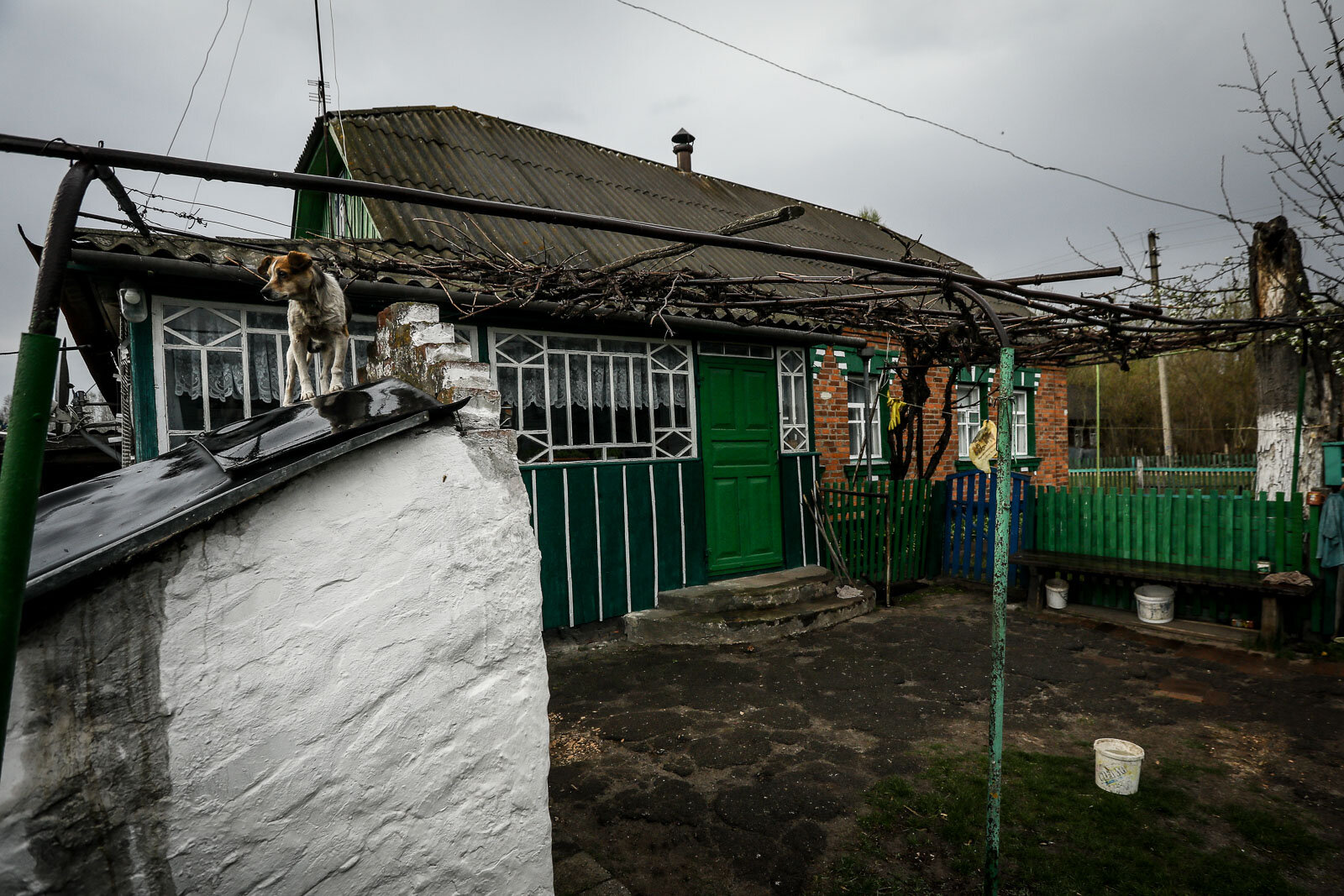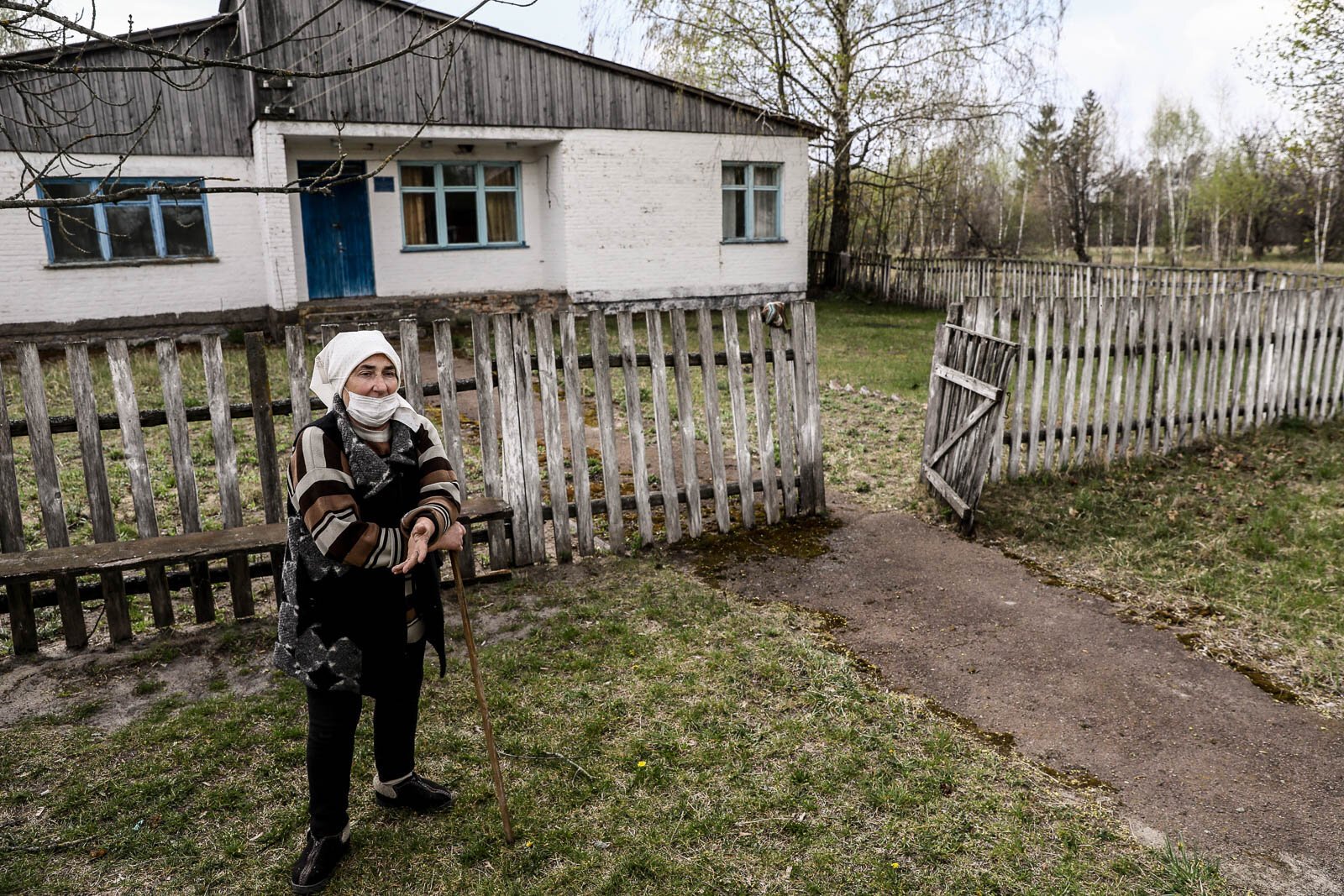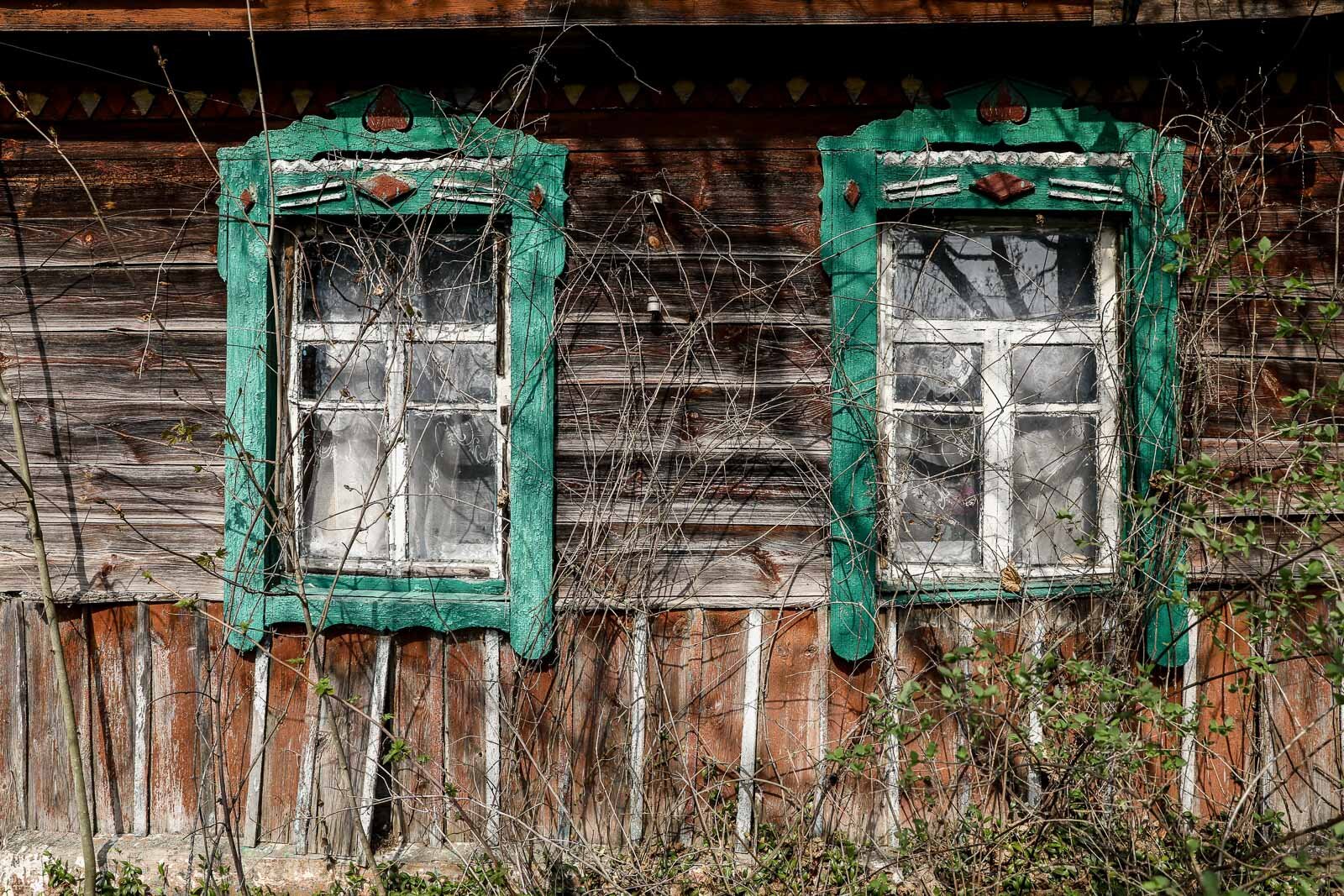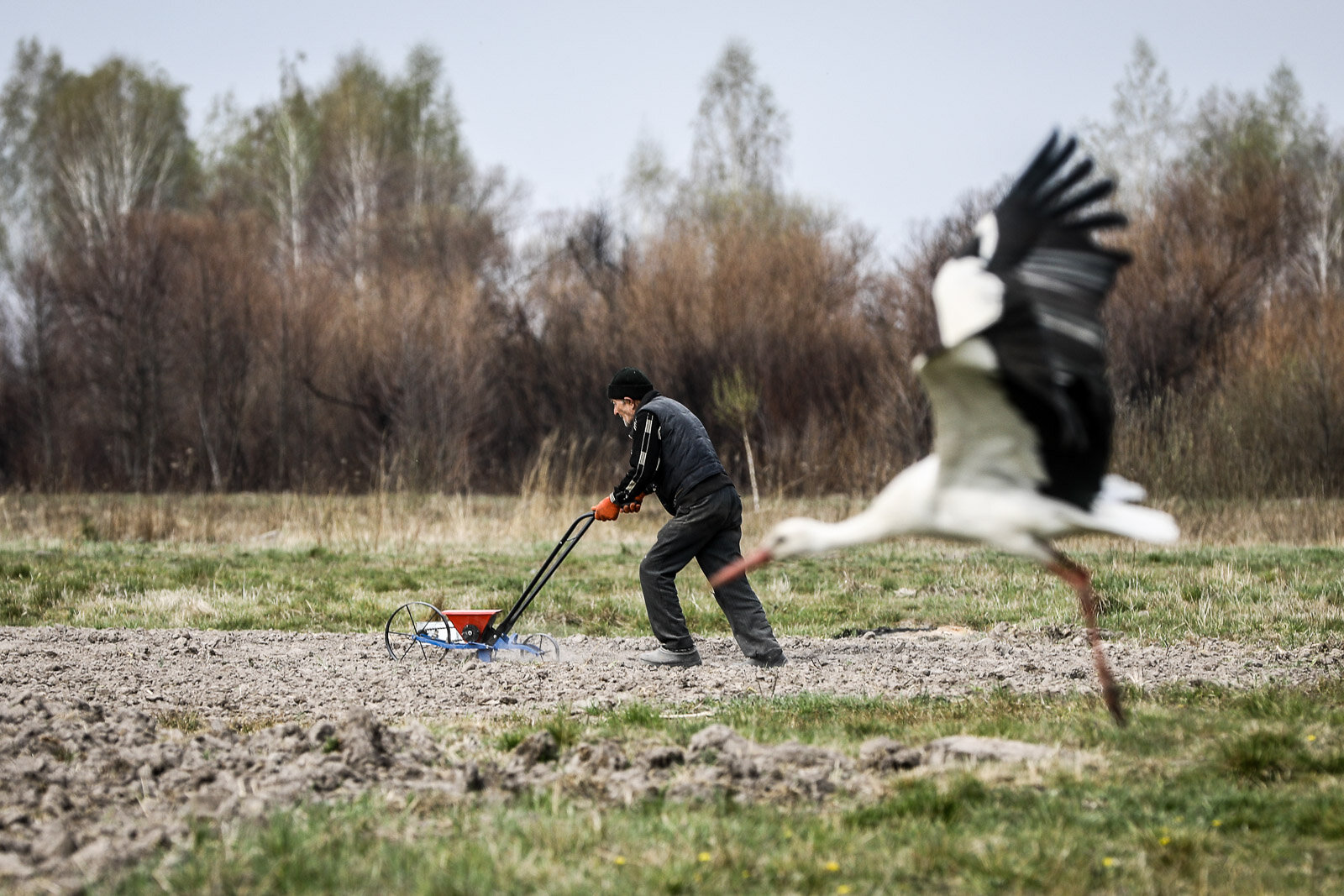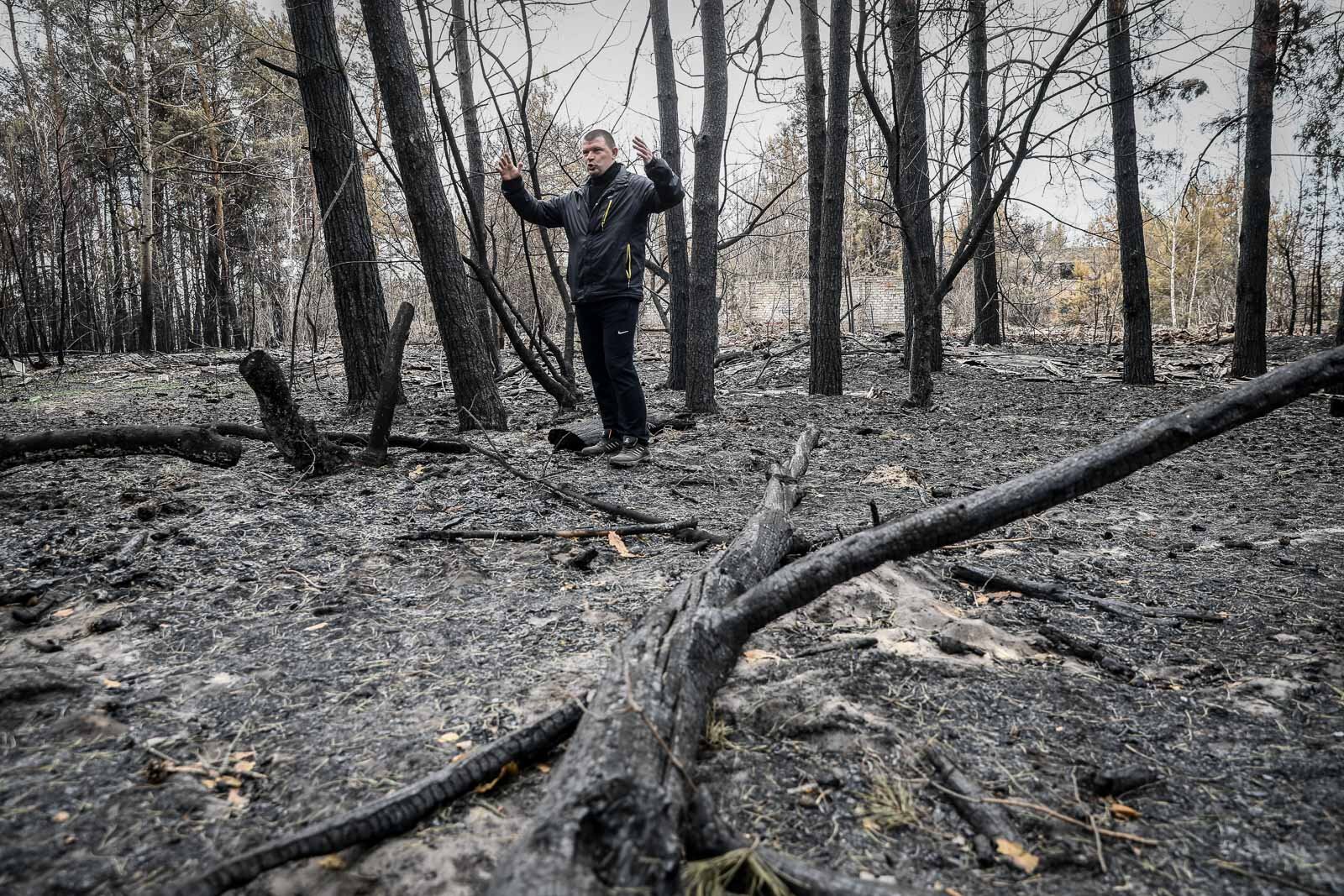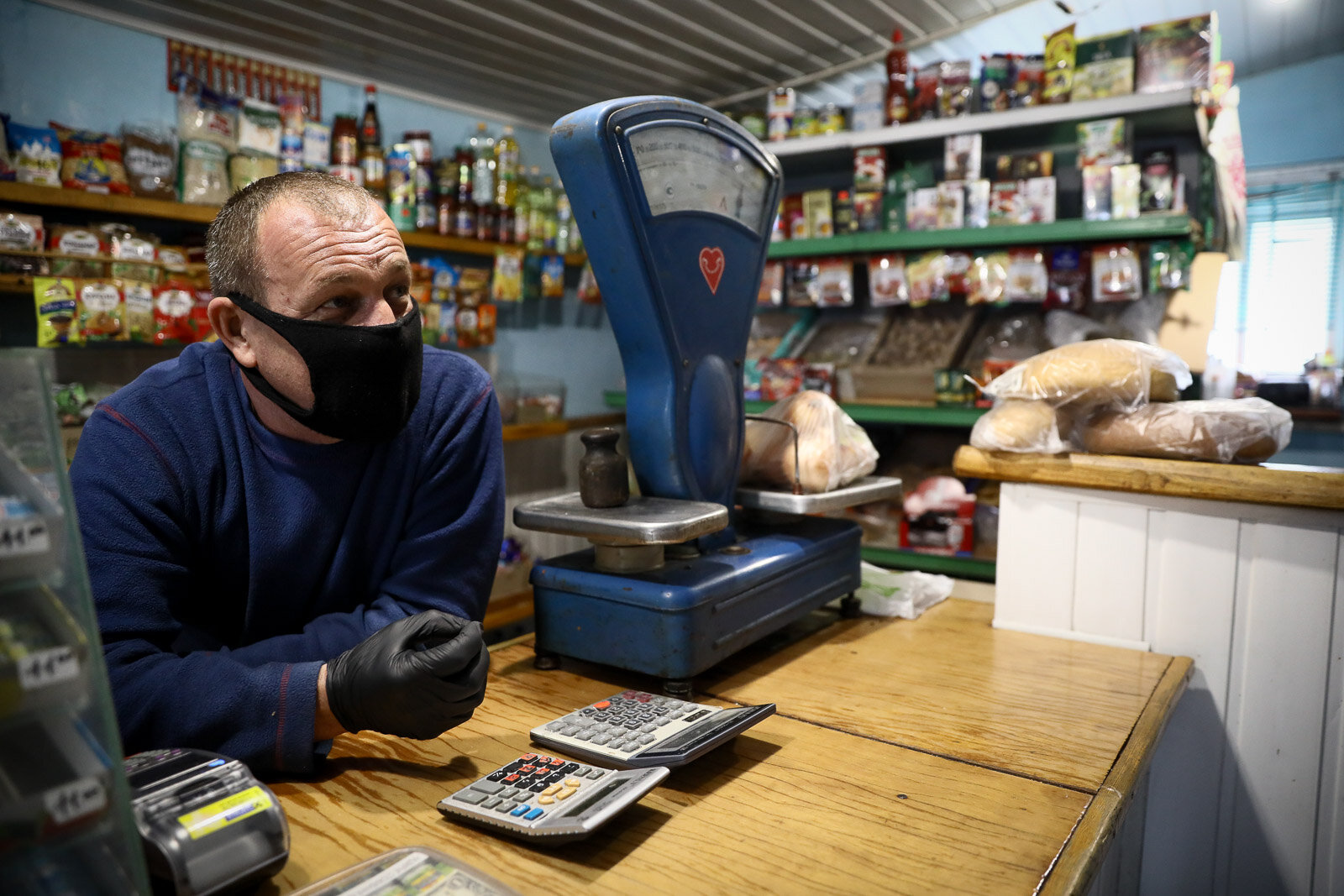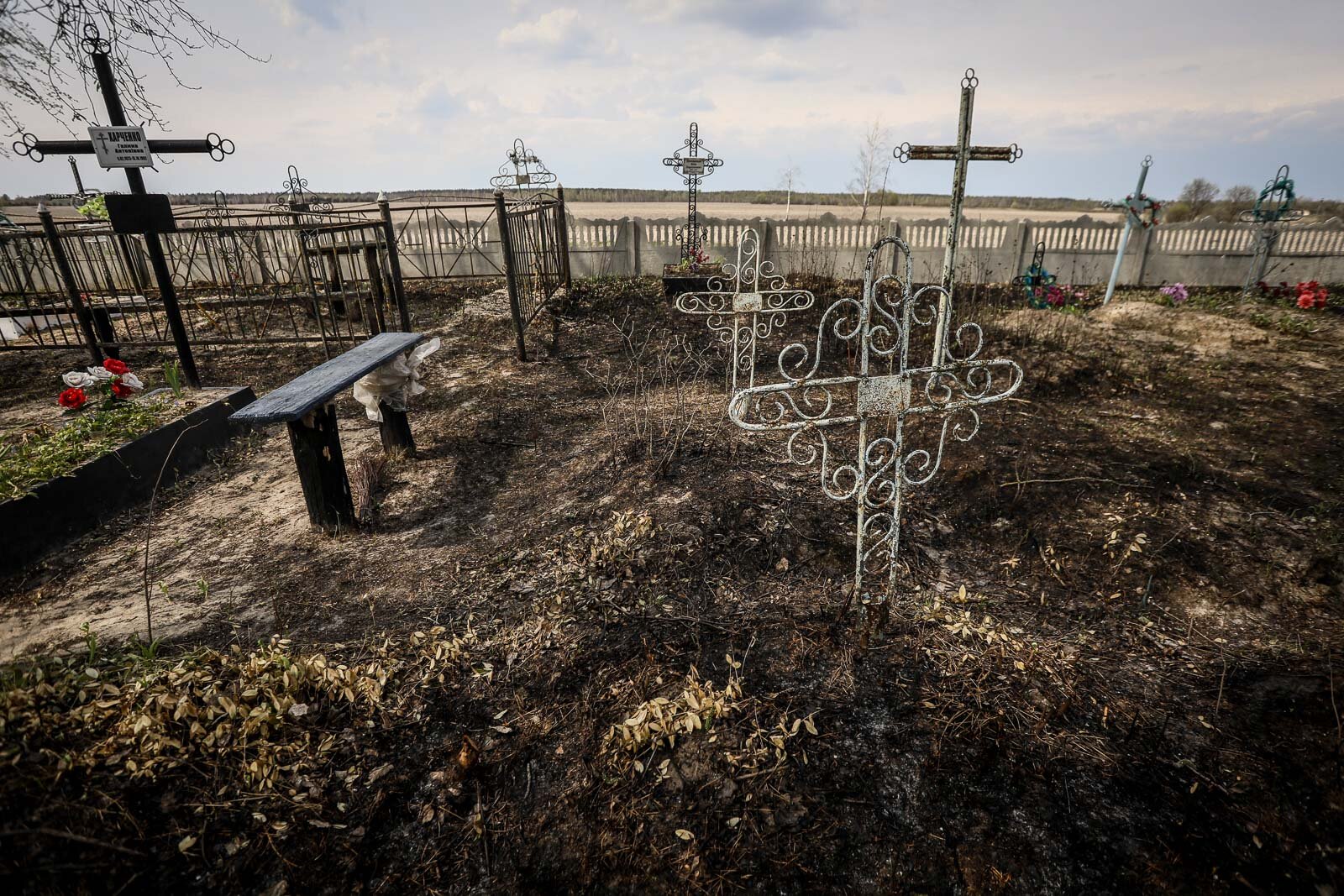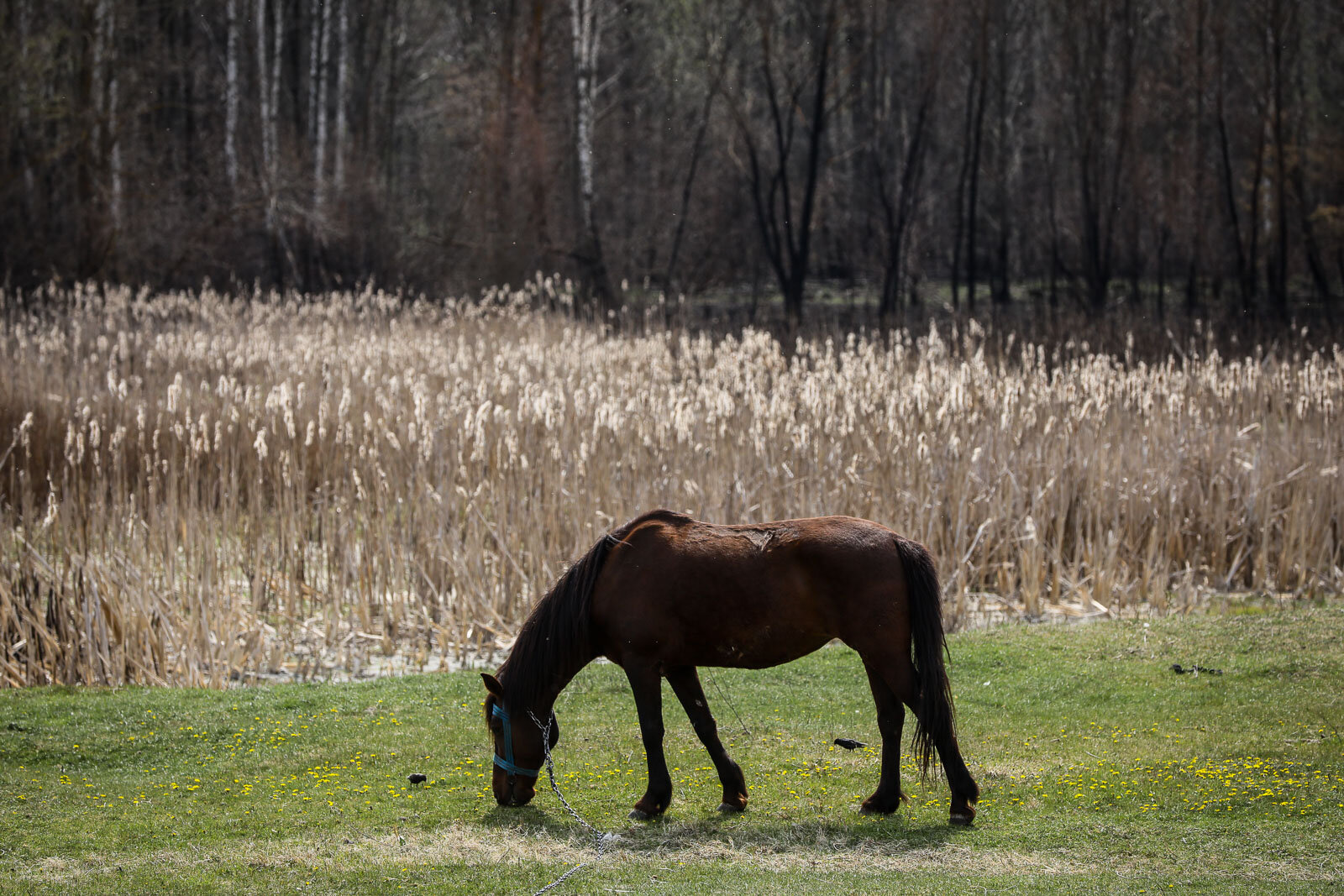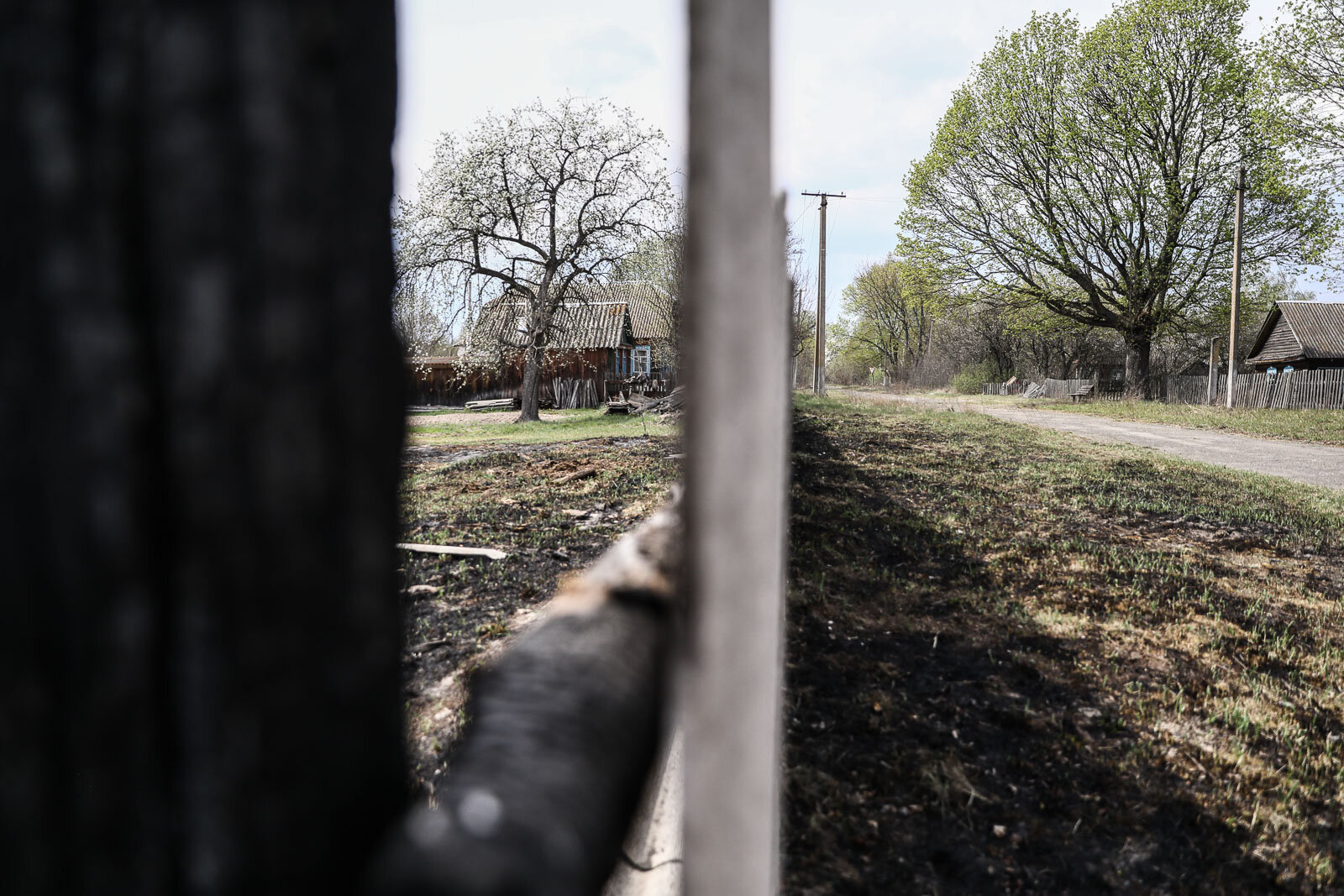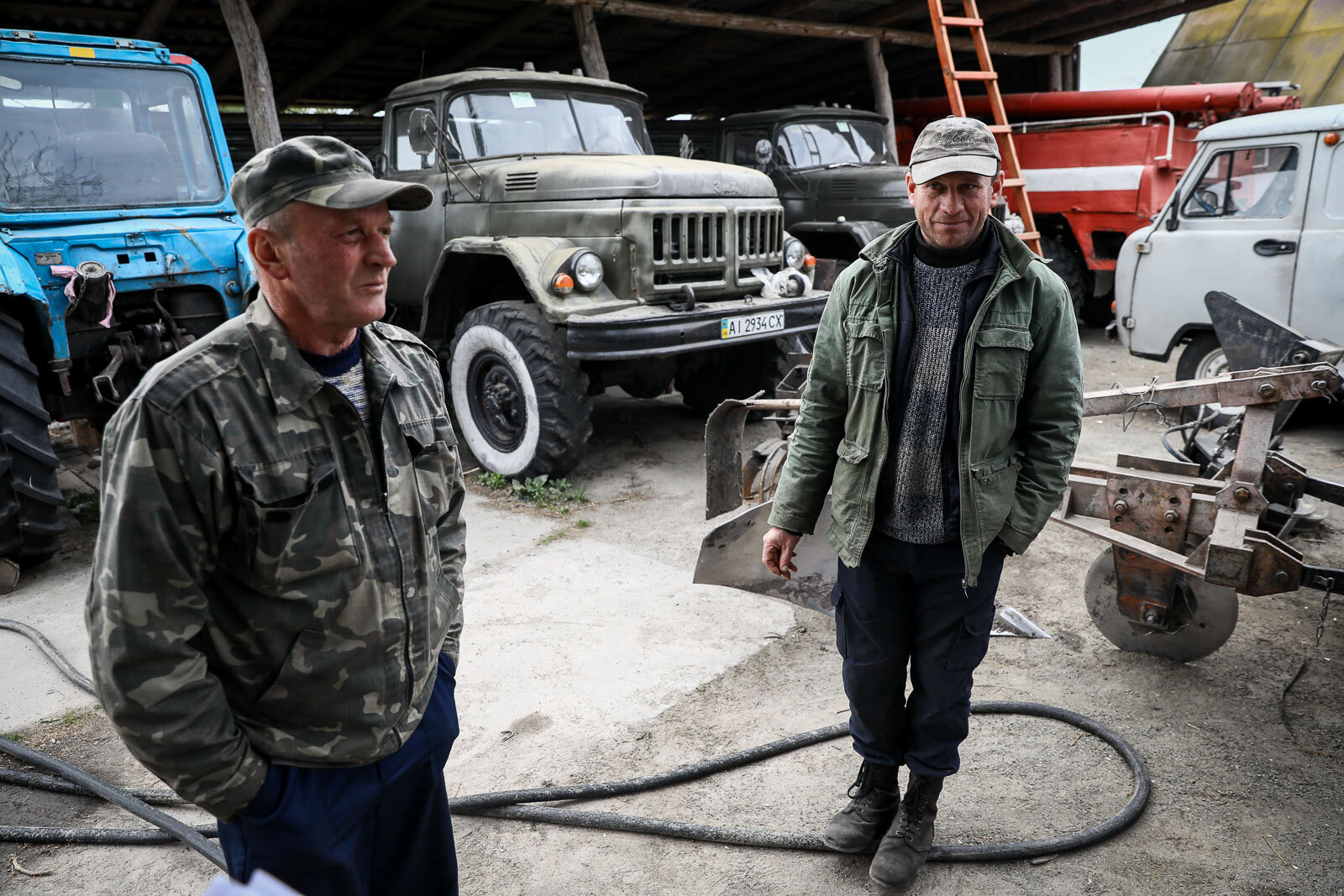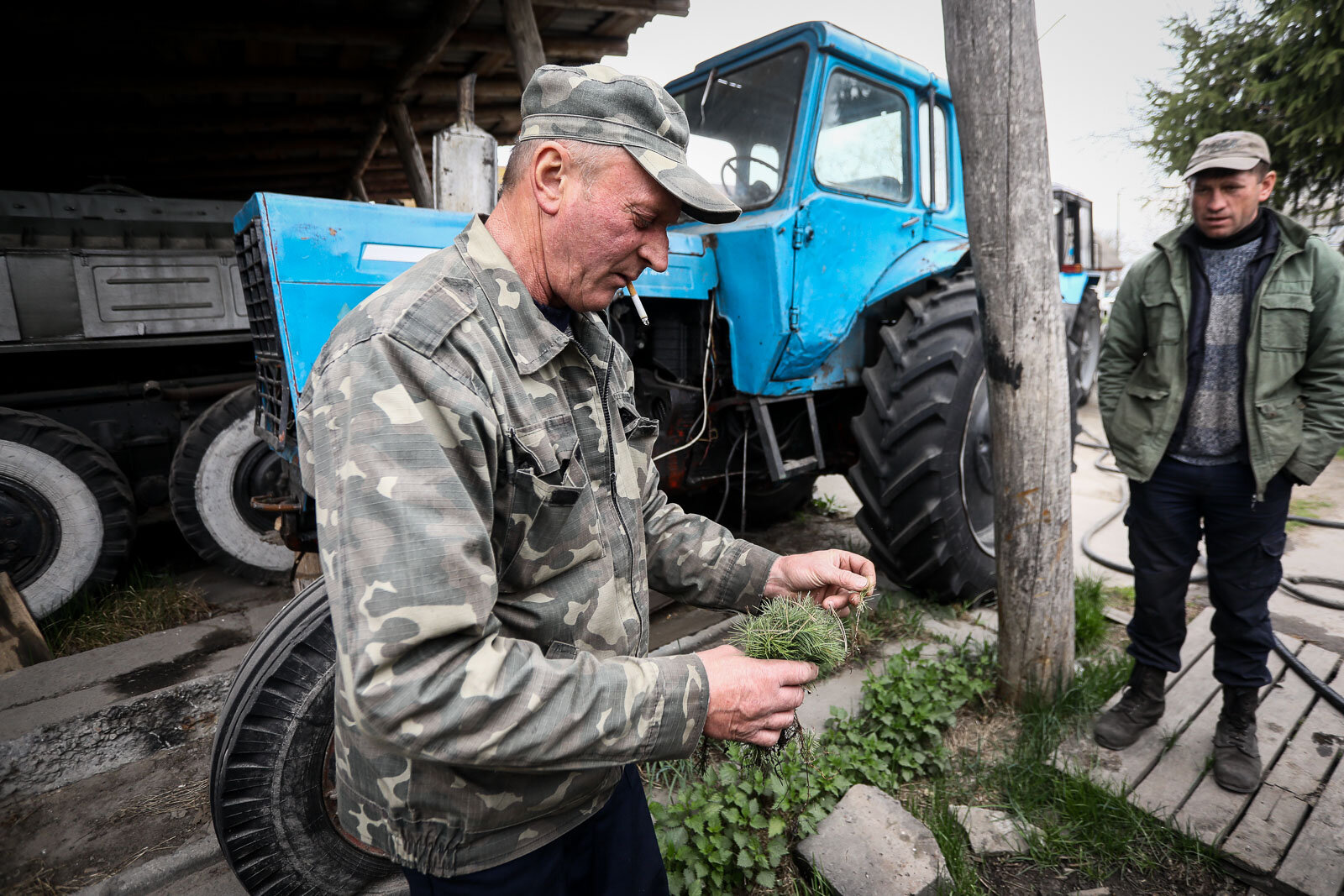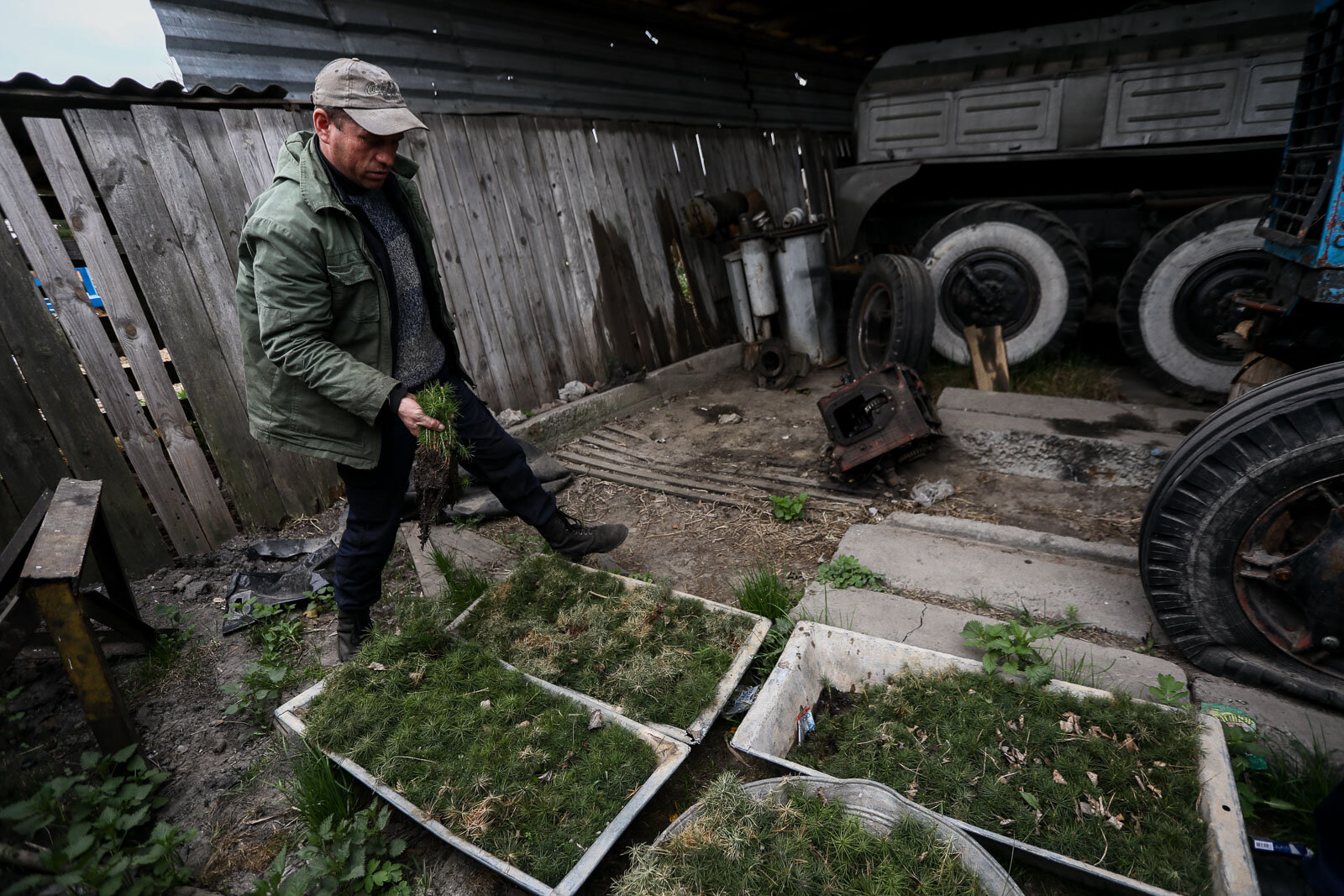Thirty-four years after the catastrophic explosion at the Chornobyl nuclear power plant, another tragedy ravaged the region around Chornobyl: forest fires.
Last month, fires raged for days in the forests and fields of the Exclusion Zone, some 130 kilometers north of Kyiv, raising worries about radiation levels in the capital. But it wasn’t just the forests that suffered.
The frontier lands around the Chornobyl zone have plenty of villages that are still occupied. After Reactor 4 at the nuclear plant exploded in 1986, poisoning everything around it with radiation, many villagers living just outside the mandatory resettlement area chose to stay at their own risk.
This April, around the anniversary of the nuclear catastrophe, the villages were disturbed again — by fire.
Abandoned
In 2019, the critically-acclaimed “Chernobyl” miniseries gave a surge of publicity to the Chornobyl zone and the ghost city of Pripyat, which have already been popular tourist destinations.
But in the populated villages near the exclusion zone, people feel more abandoned than ever.
The territory of the exclusion zone covers a part of the Ukrainian ethnological region Polissia, which means “forest terrain.” Polissia covers the northern parts of Volyn, Rivne, Zhytomyr, Kyiv and Chernihiv oblasts. This territory has a low population density and it is not growing. There are several reasons. One of them is Chornobyl.
Citizens in this region preserved many cultural traditions, particularly in the areas near the exclusion zone.
The villages fall into the “Zone of Voluntary Resettlement.” People who chose to leave, many whom were families with children, were given new homes in other parts of Ukraine as part of the state program to eliminate the Chornobyl disaster’s consequences, which began in 1986.
Interestingly, the same state program was tasked with stimulating people to stay in these villages and began developing the local infrastructure. In the first few years after the catastrophe, authorities supplied gas to the villages, built plumbing systems and renovated the roads. This initiative stopped in 1996 — the now-independent Ukraine had no money to keep funding the program.
Since then, the half-evacuated villages around Chornobyl have been slowly deteriorating.
With few to no jobs, residents of these villages rely on farming, foraging in the woods and harvesting lumber. The soil is not the best for farming, but at least it’s free of radiation. In 2014, the fields were finally declared clean and plowed for the first time since 1986.
This year brought a disturbance into the usual life in the Chornobyl frontier lands — forest fires.
In the village Luhovyky in Kyiv Oblast, the fire arrived on the morning of April 8.
“I saw a cloud of smoke on the side of Fabrykivka (a nearby village), then I took my car and drove to the head of the village council, to tell him about the fire coming toward the houses,” said Oleksandr Martynenko, the owner of a village grocery store. He was one of the residents who helped the firefighters and forest rangers stop the blaze.
Vasyl Bilko, head of the village council of Lyhovyky, says that authorities told him to prepare for evacuation when the fires approached.
“But if we leave our houses, who will help fight the fire?” he said.
Earlier, on April 2, the conflagration destroyed a forest near the village Rahivka, local resident Tetiana Pinchuk recalled. It didn’t come too close to the houses because the village is surrounded by plowed fields. Police arrested local resident Oleksandr Bydychyn, 27, for burning dry grass, which caused the fire. Rahivka forest ranger Serhiy Hrynevych said that the fire simultaneously appeared on multiple sides of the village early in the morning.
Three days later, the fire came to the village Stara Markivka, on the other side of the forest. Several houses burned down. Some of them had been long abandoned. Others belonged to the people who don’t live in the village on a permanent basis. Locals say that many firefighters, forest rangers and people from the neighboring village of Shkneva rushed in to help.
Now Stara Markivka is surrounded by burnt forest. Black charcoal and the smell of ash is everywhere.
On April 25, local residents Yuri Voleniuk and his wife Tetiana Romanenko walked through the destroyed area, searching for scrap metal.
“There is no work for me here,” explains Voleniuk. “Usually in the summer I harvested berries and mushrooms in the forest, but now I don’t know what to do.’’
Even before the fires, these villages have been falling apart. Their future is uncertain.
In 1986, there were around 80 houses in Stara Markivka. Today, only 30 houses are left. Recently, for the first time in a while, a man bought a house in the village. Local residents joke that people should hurry up to buy houses in Stara Markivka, “before they burn.”
Mykola Serhiychuk from Rahivka was a fire truck driver for 20 years. Now he is a forest ranger, who helped put out the forest fire in the village. He has never seen a fire that big in the area before — wild boars, foxes and deer were fleeing from the blaze without being afraid of people.
“It wasn’t the first fire here, but it was definitely the biggest one,” he told the Kyiv Post.
As of May 2, small forest fires still sputtered throughout the Chornobyl Exclusion Zone and in the nearby woods of Kyiv and Zhytomyr oblasts. More than 200 people are still fighting the fires, according to the government reports.


